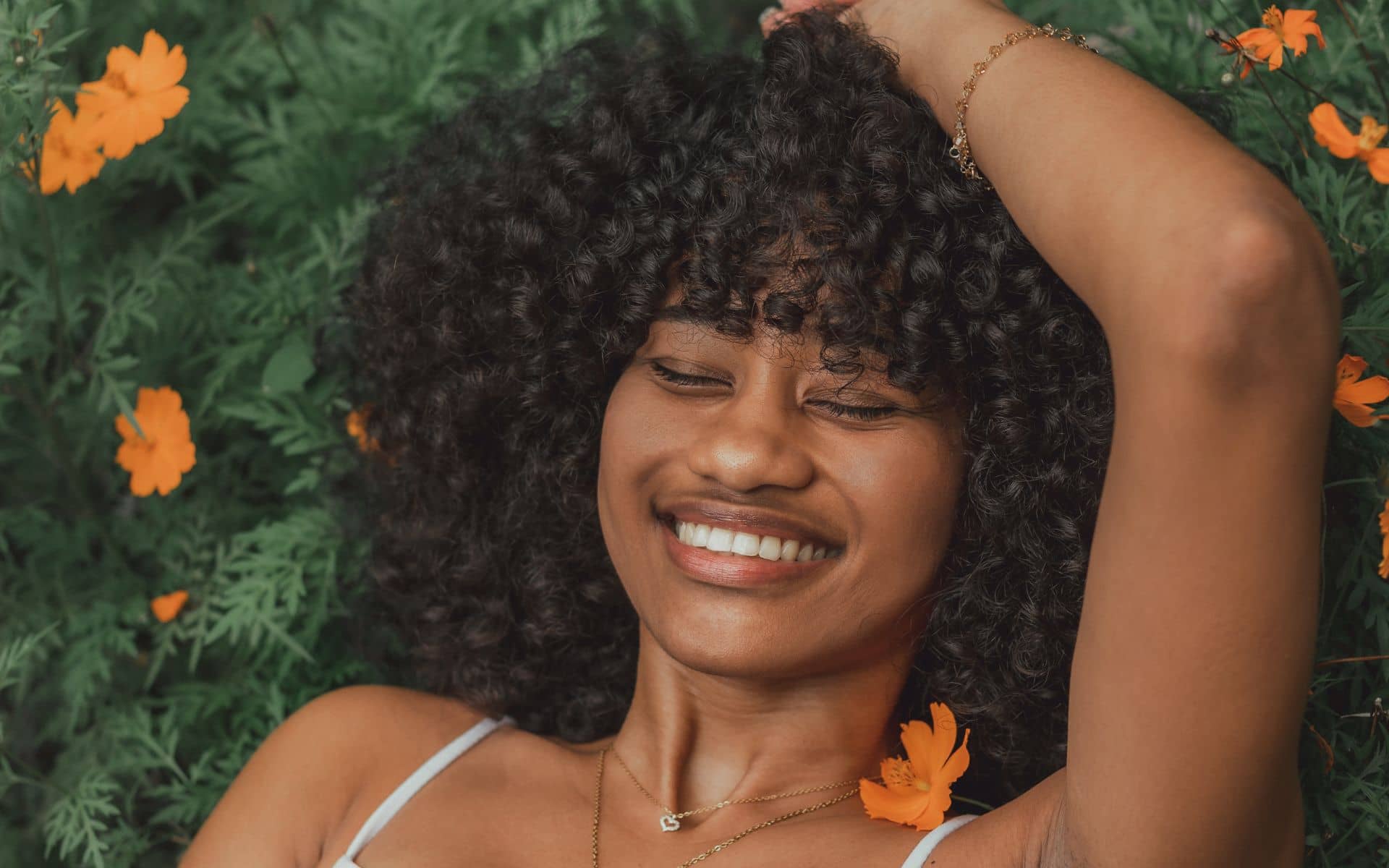As much as we love silk presses! The hardest part of getting a silk press is the maintenance and getting it to last without reverting and heat damage. Most Naturalistas struggle with their curl pattern reverting once they get in contact with steam, heat or sweat. Especially Type 4 Naturalistas who have a coarser and tighter texture. We’ll be delving into some silk press tips to help you get the most out of the style. Plus run through some FAQ’s to help you care for your coils and curls.
Silk presses are great for switching up your natural kinks, coils and curls for a sleeker and straighter look. It gives you a new look without having to chemically alter your hair strands with relaxers, keratin treatments and texture releases. They’re awesome for when you want to wear straighter hairstyles for special occasions like weddings, events, nights out etc. Once you get a silk press – you feel like a new person. To be honest – with any hairstyle you feel like a new woman! You can go from being Brandy with braids to Nia Long with a pixie cut and Beyonce with a weave. That’s the beauty of natural hair – you have so much versatility with your styling options.
What is a silk press?
A silk press is a technique used to straighten your Type 3 & Type 4 hair texture without using any form of chemicals. The process differs from using just a flat iron due to the technique and products used to give it the soft and silky look without weighing down your natural hair. It’s basically a wash, blow dry and press using lightweight serums and leave ins.
The technique includes blow drying your coils and curls in a stretched straight state to achieve a blowout look. Followed up with a flat iron to help seal in that extra smoothness and silkiness with 1 to 2 passes. If done correctly, you shouldn’t have any heat damage and your hair should revert back to its natural state once you wash it.
How long does a silk press last?
They typically last 2 to 4 weeks depending on how you maintain it. It’s likely your roots will become puffier at the end of the 2nd week due to sweat, moisture and weather. However, the majority of your hair should still remain straight until you fully saturate your hair with water and wash your hair. Some naturals will have slightly longer results if they silk press regularly and have trained their hair.

10 Tips & Tricks for making your Silk Press last longer
1. Avoid Moisture
We all know moisture is key for natural hair to grow and thrive but in a silk press environment. Moisture and humidity is the enemy! Once you get in contact with it – your hair will begin to revert and puff up again. Now there will be points of the day it’ll be impossible to stay away from moisture completely. For instance – when you shower in the morning, sweat from working out and humid or rainy weather conditions.
Here are some tips on how you can minimise moisture whilst rocking your silk press:
- Showering
- Wrap your hair tightly in a scarf (in fact 2 for that extra protection), then bonnet and wear a shower cap on top to lock out the steam
- You might want to shower with lukewarm water as opposed to a higher temperature to reduce the steam.
- Washing your face
- Make sure your hair is wrapped or pinned away before washing your face. For extra protection, wear a towel headband along your hairline. This will help soak excess water and stop it from travelling to the rest of your hair
- Working out
- Wear your hair in a ponytail and apply a scarf. Wear a sweatband on your forehead or directly on top of your hairline to soak up the sweat
- DO NOT remove your scarf until your hair is completely dry! This will help your hair dry back in a stretched state as opposed to reverting
2. Prep your Hair – Clarify and Deep Conditioning Treatment
Prepping your hair is a really important step if you want your silk press to last. To get a nice flowy look your hair needs to be washed thoroughly and all product build up should be removed from your hair and scalp. Silk presses won’t last on dirty hair – simple as! So wash your hair with a clarifying shampoo and then follow up with a moisturising shampoo to make sure your scalp is clean.
It’s also important to get as much moisture locked into your hair strands prior to the straightening process. Get a deep conditioning treatment with hydration benefits and use steam to help the product penetrate through your hair shaft. Then follow up with a liquid based leave in conditioner. This helps you lock in as much moisture as possible to keep your hair healthy and not dry whilst wearing the style.

3. Stay away from water based and heavy products
Water will revert your hair so you want to stay away from any moisturisers that contain liquid. Instead you’ll want to use lightweight oils and serums. Be careful not to be too heavy handed with products. The last thing you’ll want is greasy looking hair. Too much product on your silk press will weigh it down and you’ll no longer have that flowy silky look.
4. Wrap your hair at night
Don’t go to bed without wrapping your hair no matter how tired you are! Trust me, you’ll regret it in the morning. Wrap your hair at night with a silk scarf and then wear a bonnet on top. For extra protection opt for a satin or silk pillowcase in case your scarf wants to go for walkies in the middle of the night! (Bad joke! But you get the gist).
5. Touch up on a low setting
You want to avoid re-adding heat to your hair once your silk press has been done. But may need to touch up your hair depending on how long you plan to wear your silk press for. To avoid any form of heat damage, stick to blow drying your roots on a low setting. We’d avoid re-straightening but if you have to – work in sections and do 1 pass. Your silk press should look as good as brand new with a touch up here and there.
6. Style with flexi rods and pin curls once your roots start frizzing
This is one of our fav tips to get more out of your silk press without having to reapply heat. You can experiment with flexi rods, rollers and pin curls. It won’t be super sleek but it’ll still be straight with a slight bounce to it. This is a great way of styling out puffy roots whilst making the most of your press. You can go a step further by experimenting with different styles. You could do a half up half down style or pin up part of your hair with a claw clip.

7. Try a Dry Shampoo
If your hair is becoming greasy from oils/serums starting to weigh your hair down. You can use a dry shampoo to remove the grease and stretch your style for another week or 2. It’s important not to be heavy handed with products when wearing a silk press so bear that in mind when styling your hair daily.
8. Use products that fight away humidity
There are various products on the market that help fight away frizz so opt for products that have these properties when choosing, serums, oils and heat protectants. Although these ingredients don’t completely get rid of humidity – it definitely helps keep it at bay making your style last longer.
9. Use wax sticks & edge control
It’s likely you’ll have multiple fly aways after getting a silk press. Instead of re-straightening and trying to get them completely perfect – use a wax stick to keep them in place. Style your edges with edge control and not gel. Gel has liquid based properties and will lead to frizz.
10. Go to a Professional
If you’re unsure of how to do a silk press then go to a professional who specialises in it. Ask for some tips on how to maintain your silk press and get some product recommendations. Talk the stylist through pain points you’ve had in the past and they should be able to offer you a tailored solution that’ll work best for your hair type and lifestyle.

Product Recommendations
Here are some popular products recommended by Naturalista’s who regularly get a silk press.


3. Design Essentials Agave & Lavender weightless Thermal Protectant Serum

4. Living Proof Instant De-Frizzer (Unfortunately, the Humidity Shield was discontinued)

5. Color Wow Dreamcoat Spray (This product is designed to keep out humidity. Th extra strength is better suited for Type 4 naturals and must be used on damp hair prior to blow drying)

Frequently Asked Questions
1: How do I keep my silk press from frizzing?
The key is to stay away from moisture and humidity. Wrap your hair whenever you’re at home with a silk or satin scarf to minimise your ends from rubbing on your clothes. Use products with anti frizz properties and you might want to try a hair spray you can lightly mist your hair with prior to heading out. You’ll also want to be mindful of how you style your hair in very humid conditions.
2: How do I make my silk press look fuller?
Add flat curls to your ends or bump your ends with a straightener to help add volume. You can also add some soft rollers at night to give you that 90’s blow out look that is straight but still full of volume. If your hair is really fine – you can add a couple tracks that match your hair texture for more volume. It doesn’t have to be a lot – 2 – 4 tracks will suffice.
3: How damaging is a silk press?
If done correctly, you shouldn’t experience any damage from a silk press. Heat doesn’t damage hair but EXCESSIVE HEAT damages hair! Prior to getting a silk press make sure your hair is in a healthy state and not already damaged. If you have split ends, it’s best to get them snipped to prevent it from travelling further. If your hair is damaged from colour or excessive breakage then it’s best to stay away from silk presses until you nourish your hair back to health.
Once you wash your hair, your natural curls and coils will revert. Just be mindful of how often you get a silk press and not re-adding heat constantly to keep your hair healthy.
4: Can you workout with a silk press?
Yes – you can workout with a silk press but have to be extra careful with your maintenance routine. Here are some steps to follow;
- Step 1 : Put hair in a high ponytail
- Step 2 : Apply a scarf
- Step 3 : Place a sweatband on top to soak up any sweat along your hairline
- Step 4 : DO NOT REMOVE your scarf until your hair is fully dry!
- Step 5 : Once dry – style as normal or wrap your hair
FINAL THOUGHTS
We hope you found our silk press tips helpful. Silk Presses are great but it’s all about the technique and products you use to get your hair in a silky straight state. Make sure to do the prep needed to get enough moisture into your hair strands to keep your hair healthy.

Have you tried any of these TIP’s? Do you have any further suggestions?
We’d love to hear from you. Leave a comment below






















